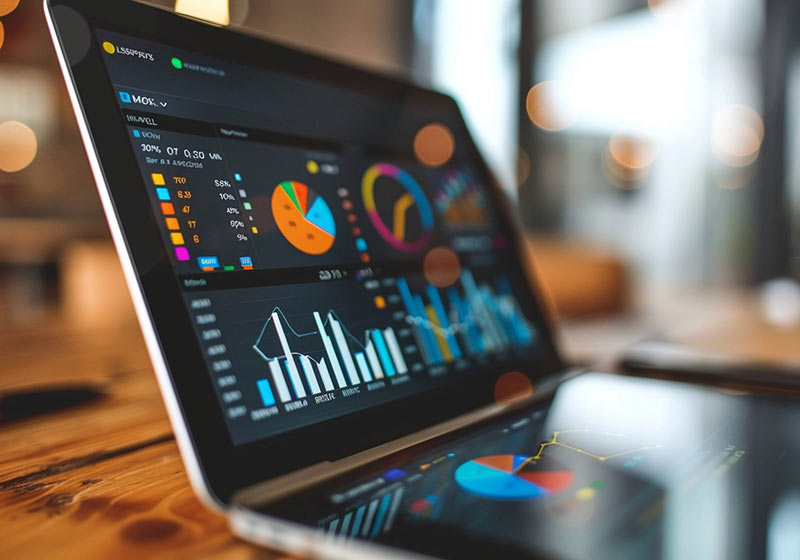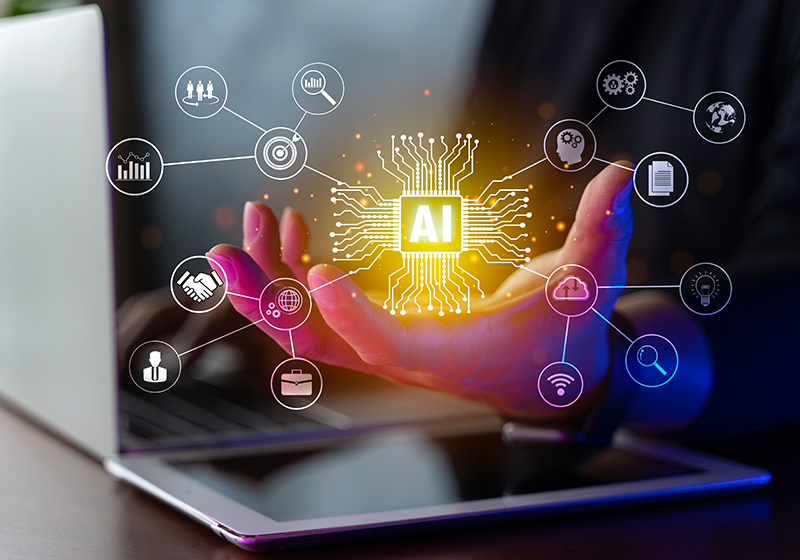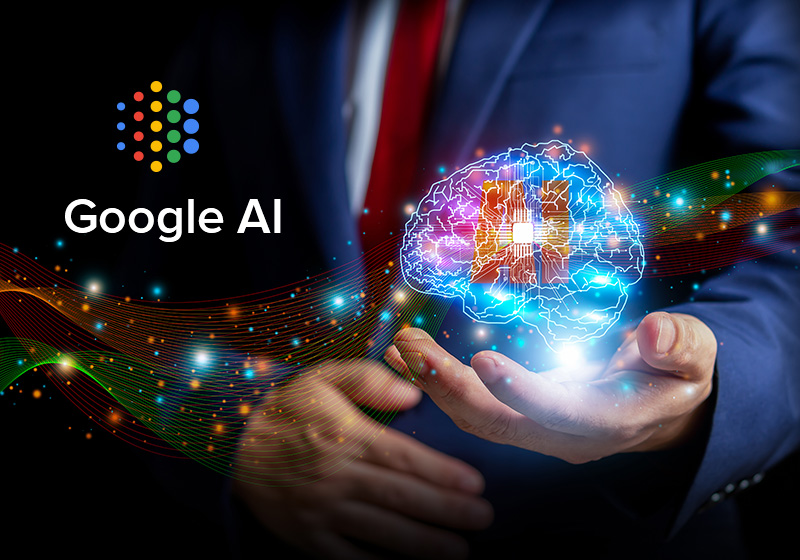AI
The Role of AI in Demand Forecasting: Use Cases, Benefits, Solutions
 Updated 16 Oct 2024
Updated 16 Oct 2024

With the disruptive technological advancements and market competition, I would argue that one of the most profound applications of technology is the role of AI in demand forecasting. Through efficient forecasting, business needs are well anticipated, costs are slashed, and customers are fully satisfied. According to reports, the demand forecasting market is predicted to reach a growth rate of 30% by 2025 due to innovations in artificial intelligence and machine learning.
Q3 Technologies, a specialist in AI and machine learning solutions is enabling organisations to transform demand forecasting landscape. When based on the most advanced AI trends, they empower its partners to adapt to the modern market demands, improve the supply chain and perform data-driven analyses. In this blog, we will explore AI-based demand forecasting, its use cases, AI solutions & challenges, the importance of statistics & trends, and 2025 forecasts. Let’s first define what demand forecasting is and why AI is critical.
What is Demand Forecasting?
Demand forecasting involves anticipating the future requirements in demand for products or services of an organization based on aspects of history, comprehensive market research and anticipated trends. Demand forecasting helps the business organization to make the right decisions in areas such as inventory, supply chain, marketing, and even fiscal planning. It can effectively reduce the costs inherent in holding too much or too little inventory, therefore making it easier for firms to be profitable and deliver value to their customers.
The main drawback of traditional solutions for demand forecasting is the reliance on statistical tools along with the usage of data analysis methods, which can be quite erroneous and highly time-consuming. In the past, demand planning and forecasting were done manually but this has now changed as AI takes over being accurate, fast, and can be scaled up.
How AI is Transforming Demand Forecasting
Demand forecasting using AI development services is gaining significance due to the availability of big data, and its ability to analyse and make accurate predictions. Traditional research methods lack responsiveness and cannot adapt to changing contexts, while AI is programmed to process time-sensitive information, interpret common changes in the market, as well as modify the forecast. This enables the organization to meet demands more swiftly, ensuring they consistently have the right stock available at the right time.
Use Cases of AI in Demand Forecasting
A study revealed the fact that AI influences demand forecasting in multiple industries. Here are some prominent use cases where AI has transformed the way businesses predict demand:
1. Retail and E-commerce
Demand forecasting is critical to inventory management and, therefore, customer satisfaction in the retail and e-commerce business. Historical sales data together with customer behaviours, seasonality and competitors’ analysis are also other significant factors affecting the AI applied to forecast demand most accurately. For example, AI can assist the e-commerce platforms work on the network of product offerings, sales promotion, and supply chain in terms of demand.
It also makes everyday tools like advertising and brand positioning, mainly supplements ubiquitous and capable of recognising trends and changes in consumer behaviour in real time, enabling retailers to adjust marketing campaigns as necessary. From this perspective, there are likely to be fewer cases of stockouts, decreased cost of holding inventory and increased sales.
2. Maintenance, Planning and Production
This is where manufacturing and AI converge for highly effective demand prediction for raw materials and end products. It helps manufacturers to manage production timelines efficiently by minimizing resources used and therefore increasing efficiency. Based on various factors such as market forces, economic conditions and suppliers, production requirements can be predicted by the machine learning models.
Demand forecasting leverages artificial intelligence to predict automotive manufacturing cycles by analyzing consumer preferences for models and options. This process ensures accurate production levels, minimizing the risk of overproduction or shortages.
3. Supply Chain Management
AI also helps to increase the speed of moving materials and products through creative demand forecasting. Proper management of demand forecasting enables firms to order raw materials for production at the right time hence reducing the delay in the delivery of the final products.
AI helps supply chain managers predict future problems and delays and plan for them to avoid the occurrence of such issues. This prevents expensive operational costs, reduce delivery time and increase customer satisfaction.
4. Pharma and Healthcare
In the pharmaceutical business, demand forecasting plays an important role in controlling the stock and storage of drugs, and planning production and distribution. With demand forecasting powered by AI, pharma firms can predict the demand for prescription drugs better and avoid both – shortage of drugs and surplus inventory.
AI can also look at environmental factors, such as epidemics, influenza, and other seasonal diseases or changes in the law regulating the use of some drugs to predict the need for certain medications. This makes certain that in the course of their service delivery, the providers have the right drugs to enhance the patient’s health.
5. Food and Beverage Industry
AI is changing the way demand forecasting is done through inventory control in the food and beverages industry to reduce food waste. Consumer buying behaviour, consumption rate during different seasons, and sales promotions influence the probability of future sales of various items by machine learning model.
Cafes and delivery services also utilize artificial intelligence to anticipate the demand of certain food items in their menu’s consumers are likely to order so that they can cut costs on food wastage and manage their supply chain better. This in turn contributes to cost cuts and an increase in the sustainability of food production and delivery.
Revolutionize Your AI Journey with Volt
What if you could cut development costs by 40% and deploy AI-powered solutions faster, with guaranteed quality and security? Volt makes it possible.
Benefits of AI in Demand Forecasting
The integration of AI into demand forecasting offers numerous benefits to businesses across various sectors:
1. Increased Forecast Accuracy
AI-based demand forecasting enables such techniques to capture more data leading to better predictions. These tools can handle actual time data, comprehend the market situation and modify forecasts by the current state. Consequently, it becomes easier for businesses to avoid wishing for the worst and buying in large quantities or, on the other hand, ending up with a shortage of products.
2. Improved Decision-Making
As it will be analysed in the following sections, AI offers an enhanced understanding of customer behaviours, markets, and competitors. Because of this, businesses can participate in strategic planning and decision making particularly about inventory levels, pricing and product release. AI forecasting can make a company’s response to market changes instantaneous and offer a competitive advantage.
3. Cost Efficiency
AI is used in business processes to support supply chain management because the system predicts demand accurately and minimizes expenses. Implementing safety stock policies to avoid stockouts directly lowers holding costs, preserves cash, and enhances customer satisfaction as well as increases profits. AI also results in optimal resource deployment, hence reducing the overall cost.
4. Improved Customer Satisfaction
Ensuring that the customer’s demands are met is very essential for every organization. AI-powered demand forecasting provides the right stock reports in the right timeframe to the companies. Research shows that minimising stock out and back-order position can indeed enhance the satisfaction of the customer hence improving customer loyalty and customer retention.
5. Scalability and Flexibility
AI-based demand forecasting solutions are highly flexible and can easily be adapted to meet the needs of companies of different sizes. This means that from a small business that sells products locally to a multinational company, they can let AI deal with the complex issue of data while it offers value to the decision-making process.
AI-Powered Solutions for Demand Forecasting
There is a wide range of AI-powered solutions that can be applied to improve the demand forecasting activities existing in the business environment. These tools use advanced machine learning algorithms and data analytics to deliver accurate and actionable insights:
1. Machine Learning Algorithms
The most used methods in demand forecasting include regression analysis, artificial neural networks, and time-related methods including time-series modelling. These models can to a degree of certainty look at historical data sets and patterns to make a fairly accurate estimation of future demand. Machine learning adapts to new data and hence is a good tool to use in long-term demand forecasting.
2. Predictive Analytics Tools
These solutions are AI and big data-based models that give organizations an understanding of their market conditions. It means that these models can predict future trends, customer behaviour and product consumption based on real and historical data. By utilizing predictive analytics, companies can formulate preventive strategies to reduce risk levels and increase the revenue opportunities.
3. Automated Inventory Management System for Smart Industries
Advanced inventory control systems that utilise AI element to regulate stock levels and control unnecessary stock build-up. These systems can also help ordering based on stock requirements thus avoiding the incidences that would lead to overcrowding of inventories and at the same time keeping up with the balance of product availability. Another advantage of these systems is that they help businesses check on the performance of their suppliers, and in managing their supply chain.
4. Supply Chain Management with Integrated AI Solutions
AI-integrated solutions for supply chain management provide all-around insights into various segments of the supply chain right from logistics to procurement and distribution. They also highlight another advantage of using AI in delivering demand and supply chain management where companies keep on getting things wrong yet supply chain disruptions constantly occur, and this will end up costing the companies a lot of money. It is possible to mention that integrated AI solutions enable companies to develop highly flexible supply chains to react to the changes in the market promptly.
Conclusion
Demand forecasting is being revolutionized by AI by giving organizations clear information to work with and improving the quality of decisions made and the performance of the business. Literally in every sphere of businesses, starting from retail and production to healthcare and supply chain, AI-powered demand forecasting is playing an important role in accurate market trend predictions, cost-cutting and overall customer satisfaction.
In 2024, as the actual demand forecasting market expands in size and importance, relying on artificial intelligence is essential. The practical application of complex, adaptive machine learning algorithms as well as predictive analytics can serve as the basis for new business growth and progress.
Q3 Technologies as the leading provider of AI and machine learning solutions is the rightful advisor of businesses to address the AI in demand forecasting. If it is creating unique AI solutions or improving business existing processes, they provide seamless a to z service guarantee business success.
Are you looking for the next steps in your demand forecasting? Connect with Q3 Technologies now and find out how you can take advantage of our expertise in AI solutions that are tailored to business and corporate objectives to gain that much-needed edge.
Table of content
- What is Demand Forecasting?
- How AI is Transforming Demand Forecasting
- Use Cases of AI in Demand Forecasting
- AI-Powered Solutions for Demand Forecasting



